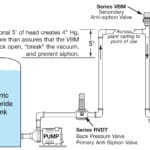So, your Chevy’s check engine light is on, and the culprit is a P0011 code? Don’t worry, this guide will walk you through understanding, diagnosing, and fixing this common Chevy issue. Whether you drive a Silverado, Trailblazer, Equinox, or another model, this guide applies to you. We’ll cover everything from simple checks to more complex repairs, empowering you to get your Chevy running smoothly again.
Decoding the P0011 Code
The P0011 code indicates a problem with your engine’s Variable Valve Timing (VVT) system, specifically on Bank 1 (the side with cylinder #1). The VVT system optimizes engine performance and fuel economy by adjusting when the valves open and close. A P0011 code suggests the intake camshaft is “over-advanced,” meaning it’s rotating too far ahead of its intended position. This disrupts the engine’s carefully calibrated timing.
Common Causes of a P0011 Code
Several factors can trigger a P0011 code. Some common culprits include:
- Low Engine Oil: The VVT system relies on proper oil pressure. Low oil levels can disrupt its function.
- Faulty Camshaft Position Sensor: This sensor tells the engine control module (ECM) the camshaft’s position. A faulty sensor can send incorrect information, confusing the ECM.
- Worn or Stretched Timing Chain: The timing chain connects the crankshaft and camshafts. If stretched or damaged, it can disrupt the precise timing relationship.
- Clogged Oil Passages: Sludge or debris can restrict oil flow within the VVT system, starving it of the lubrication it needs.
- Faulty VVT Solenoid: This solenoid controls oil flow to the VVT system. A malfunction can disrupt camshaft timing.
- Wiring or Connector Issues: Damaged wiring or loose connections can disrupt communication between the sensor, solenoid, and ECM.
Recognizing the Symptoms
Besides the check engine light, a P0011 code often presents other noticeable symptoms:
- Rough Idling: The engine may stumble or vibrate at idle.
- Reduced Engine Power: You might experience sluggish acceleration and decreased overall performance.
- Poor Fuel Economy: A drop in fuel mileage is a common symptom.
- Starting Difficulties: The engine may crank longer or require multiple attempts to start.
- Rattling Noise: You might hear a rattling or ticking coming from the engine, especially near the timing chain.
DIY Diagnostics and Fixes
Before rushing to a mechanic, try these DIY diagnostic steps:
- Check Engine Oil: Ensure the oil level is correct and the oil is clean. An oil change might be all you need.
- Visual Inspection: Examine wiring and connectors around the camshaft position sensor and VVT solenoid for damage or looseness.
- Inspect Camshaft Solenoids: Remove and check for debris. Clean with brake cleaner if needed.
- Test Camshaft Position Sensor: Consult a repair manual for the specific testing procedure. A multimeter can be helpful here.
DIY vs. Mechanic: Know Your Limits
Some fixes, like an oil change or replacing a camshaft position sensor, are DIY-friendly. However, timing chain replacement or intricate VVT system repairs often require specialized tools and expertise. If you’re not comfortable working on your engine’s internals, consult a qualified mechanic.
Estimated Repair Costs
Repair costs vary based on the cause and whether you DIY or hire a mechanic. Here’s a general estimate:
| Issue | DIY Cost (Estimated) | Mechanic Cost (Estimated) |
|---|---|---|
| Oil Change/Top-up | $30-$70 | $70-$150 |
| Camshaft Position Sensor | $50-$150 | $150-$300 |
| Timing Chain Replacement | $200-$500 (parts) | $800-$2000+ |
| VVT System Repair | $100-$300 (parts) | $400-$1000+ |
Preventing P0011: Proactive Maintenance
Regular maintenance is key to avoiding a P0011 code. Regular oil changes with the correct viscosity oil are crucial, as is adhering to your Chevy’s recommended maintenance schedule for timing chain/belt inspections and replacement.
Further Considerations
While this guide covers common causes, the P0011 code can sometimes stem from less common issues. If the problem persists after trying these steps, consulting a mechanic for advanced diagnostics is recommended. For example, they might use an oscilloscope to pinpoint the root cause.
While dealing with car trouble can be frustrating, understanding the P0011 code and its potential solutions can help you navigate the repair process confidently. By addressing the issue promptly and staying proactive with maintenance, you can keep your Chevy running smoothly and avoid costly repairs down the line.
Remember, ongoing research and technological advancements may influence our understanding of this code and its solutions in the future. For a look at other useful automotive information, you can delve into the differences between novocaine vs lidocaine.
- Unlock Elemental 2 Secrets: Actionable Insights Now - April 2, 2025
- Lot’s Wife’s Name: Unveiling the Mystery of Sodom’s Fall - April 2, 2025
- Photocell Sensors: A Complete Guide for Selection and Implementation - April 2, 2025
















